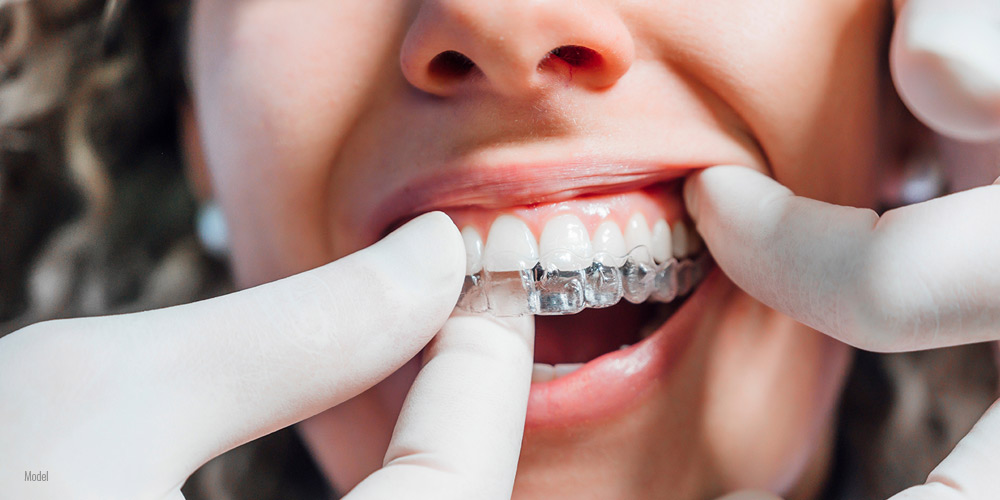
How Does Invisalign® Work?

Most people understand that, like traditional braces, Invisalign® is excellent at straightening teeth. But how, exactly, does Invisalign® work its magic? In this blog, we’ll discuss the science behind Invisalign® so you’re better prepared for your journey to a beautiful smile.
3 Min Read:
What Is Invisalign®?
Invisalign® is a brand of clear aligners designed to gradually straighten your teeth over time. Unlike traditional braces, which use brackets and wires, Invisalign® aligners are custom-made for each patient and are virtually invisible, making them a popular choice for teens and adults alike.
The Invisalign® system works by applying controlled, gentle force to your teeth, moving them into the desired position. Each set of aligners is designed to make incremental adjustments, straightening teeth and correcting minor bite irregularities.
Below, we walk you through the science of Invisalign® and how the system works.
Step One: Meticulous Treatment Planning
The first step in your Invisalign® journey is for your dentist to get a comprehensive scan of your teeth. Using a handheld device, they scan your teeth, and the images are used to create a 3D digital model of your mouth. The 3D model is then uploaded into ClinCheck®, Invisalign’s proprietary software, which uses the model to map out the entire treatment plan. ClinCheck® works by predicting tooth movement at every stage of treatment, and that plan is then used to create the customized aligners.
The Science of Invisalign® Aligners
Once your Invisalign® aligners are fabricated, your treatment begins. The aligners are made of SmartTrack®, a proprietary medical-grade thermoplastic material engineered specifically for orthodontic use. The material is flexible enough to fit snugly around each tooth but durable enough to maintain its shape through 22 hours of wear per day. SmartTrack® is also hypoallergenic and free of BPA.
Your Invisalign® aligners work by applying steady force to specific teeth. Each aligner is engineered to exert the precise amount of force at the exact angle needed to incrementally move your teeth where they need to be.
When you move to the next aligner tray in the series, you may notice that the new aligners feel tighter than the previous ones. This isn’t because the other ones stretched out (they didn’t) but because the new trays are applying pressure to different teeth.
How Invisalign® Moves Your Teeth
When you get braces or invisible aligners, you probably don’t really think about how your teeth actually move into a different position. However, it’s a good question: How DO your teeth move when they’re anchored securely in your jawbone?
In between the root of your tooth and your jawbone is a ligament known as the periodontal ligament. It acts as a cushion and allows a tiny bit of movement (about two millimeters) if you wiggle any of your teeth. The periodontal ligament is also responsible for adding and removing bone around your teeth. It takes away bone when your teeth are moved during Invisalign® treatment while also filling the space left behind with new bone. This is called remodeling.
As you’re undergoing Invisalign® treatments, the aligner trays exert pressure that gently moves your teeth. Each tray has the capability to move your teeth about .25 millimeters, so you wear each tray as long as it takes to move your teeth according to your treatment plan. Once your Invisalign® treatment is complete, you will wear a retainer to support your newly straight teeth while the bone remodels and hardens around them, keeping them in their new position.
Discover Invisalign® in Schaumburg and Norridge
Whether you’re weighing your options between traditional braces and Invisalign® or simply curious about how Invisalign® treatments work before starting the process, understanding the science behind it helps. If you’re ready to learn more about how the experts at Royal Dental Care can transform your smile with Invisalign®, call us today at (773) 232-3929 (Norridge) or (847) 999-7620 (Schaumburg) or complete the online contact form.

